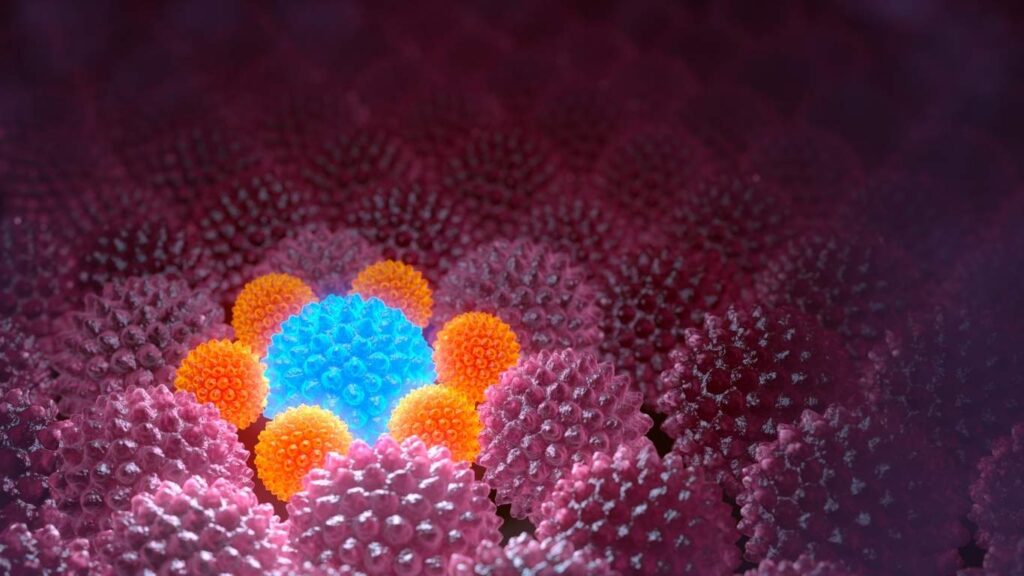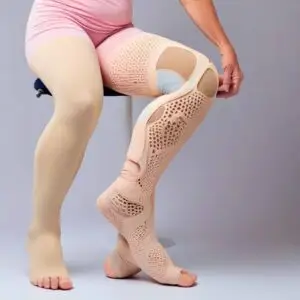How Nerve Regeneration Affects Lymphedema Recovery
Lymphedema, a condition where excess lymph fluid builds up in tissues and causes swelling, has long been associated with complex recovery processes and limited treatment options. As the medical field continues to evolve, recent advances in nerve regeneration show promising results in improving lymphedema recovery. In particular, nerve repair and regeneration hold the potential to significantly enhance the healing process by targeting the neural pathways involved in fluid drainage. This article will explore how nerve regeneration affects lymphedema recovery, the latest treatments and techniques, and how patients can benefit from these exciting advances.
What is Nerve Regeneration and Its Importance in Recovery?
Understanding Nerve Injury and Regeneration
Nerve regeneration is a complex and fragile process in which damaged nerve fibres, or axons, attempt to repair themselves after an injury. The peripheral nervous system controls sensations and movement and is vital to recovery. When a nerve is injured, it can result in impaired function, which may impact other areas of the body, such as the lymphatic system. Nerve regeneration is crucial because it allows the injured nerve to regenerate its fibres and reconnect to the affected areas, such as those impacted by lymphedema.
This process involves several stages, including forming a nerve trunk and regenerating axons through the nerve tissue. Peripheral nerve injuries, such as those sustained from trauma or surgery, can often lead to persistent deficits in nerve function, complicating conditions like lymphedema. However, breakthroughs in nerve injury and regeneration provide new opportunities to repair these injured nerves and enhance recovery outcomes.
How Does Nerve Repair Contribute to Healing?
Nerve repair is vital to healing, particularly when peripheral nerves are damaged. When the nerve has been cut, stretched, or crushed, it can significantly impair the function of the affected region. Nerve repair methods, such as autologous nerve grafting, nerve reconstruction, and nerve transfers, can help restore the damaged fibres by using sections of healthy nerves or specialized grafts.
In the context of lymphedema, nerve repair can facilitate better lymphatic drainage by repairing damaged neural pathways contributing to fluid buildup. This is particularly important for patients who have sustained nerve damage due to cancer treatments or other surgeries related to lymphatic function. Effective nerve repair and regeneration following peripheral nerve injury can significantly reduce swelling, improve tissue health, and restore normal lymphatic drainage over time.
The Role of the Peripheral Nervous System in Recovery
The peripheral nervous system (PNS) consists of nerves outside the brain and spinal cord that transmit signals from the central nervous system to various organs and tissues. It is critical in motor control, sensation, and autonomic functions like blood flow and fluid regulation. When peripheral nerve injuries occur, especially traumatic or after surgery, they can hinder these functions, affecting healing and fluid drainage.
In lymphedema, dysfunction in the peripheral nervous system can disrupt lymphatic drainage, leading to swelling and discomfort. Nerve regeneration in the PNS aims to restore communication between the brain and the affected tissues, which is crucial for improving lymphedema recovery.
How Does Nerve Surgery Facilitate Lymphedema Recovery?
Types of Nerve Surgery Used in Treatment
Nerve surgery, also known as peripheral nerve reconstruction, can help treat traumatic peripheral nerve injuries by reconnecting or repairing damaged nerve segments. There are several types of nerve surgeries used in the treatment of lymphedema recovery:
- Nerve autografts involve harvesting a section of a patient’s nerve and grafting it into the injured area, facilitating the regeneration of nerve fibers.
- Nerve transfers: In some cases, surgeons can take a healthy nerve and reroute it to a damaged nerve, helping restore functionality in the affected area.
- Processed nerve allografts involve using donor nerves to repair the injured nerve, providing a scaffold that encourages nerve regeneration.
These surgeries can play an essential role in improving lymphatic drainage by restoring nerve function and repairing the communication between the central nervous system and the affected tissues.
Benefits of Nerve Reconstruction for Patients
The benefits of nerve reconstruction for patients suffering from lymphedema are significant. By repairing damaged nerves, nerve reconstruction can improve the function of the affected tissues, leading to enhanced fluid drainage and reduced swelling. Furthermore, nerve repair can help alleviate chronic pain associated with nerve injury and enhance mobility.
Nerve reconstruction procedures, such as nerve autografts and transfers, can help patients recover from traumatic peripheral nerve injuries and restore normal bodily functions. Individuals suffering from lymphedema due to nerve damage may experience faster recovery times and better long-term outcomes following nerve repair.
Assessing the Risks Associated with Nerve Surgery
While nerve surgery can significantly enhance recovery, it is not without risks. Nerve surgery carries the potential for complications, such as infection, nerve damage, and poor healing. Additionally, the success of nerve reconstruction depends on factors such as the severity of the nerve injury and the timeliness of the treatment.
Nerve surgery must be carefully considered for patients with lymphedema. The procedure may be complex, requiring skilled surgeons and comprehensive postoperative care. Patients must discuss the potential risks with their healthcare providers to ensure that the benefits of surgery outweigh the possible challenges.
What Are the Latest Techniques in Nerve Repair and Regeneration?
Exploring Autologous Nerve Grafting
One of the most advanced techniques in nerve repair is autologous nerve grafting, which involves using the patient’s nerves to repair damaged areas. This method reduces the risk of immune rejection and ensures the graft is compatible with the patient’s body. Autologous nerve grafting has shown promising results in treating peripheral nerve injuries and lymphedema-related nerve damage by promoting axonal regeneration and improving nerve function.
Innovations in Nerve Guidance for Enhanced Regeneration
Recent innovations in nerve guidance have improved the efficiency of nerve regeneration. These advancements include using nerve guidance conduits and tubular structures that guide regenerating nerve fibres toward the target area. These conduits can be made from biodegradable materials or synthetic substances, offering a scaffold for the regenerating nerve fibres to grow along. Enhanced nerve guidance significantly improves regeneration, leading to better outcomes for patients undergoing nerve repair.
Utilizing Processed Nerve Allografts for Recovery
Processed nerve allografts are increasingly used in clinical nerve reconstruction with promising results. These grafts are derived from donor nerves and undergo a specialized process to remove cellular components, leaving behind a scaffold that encourages nerve regeneration. Processed nerve allografts offer several advantages, including reduced risk of immune rejection and the ability to repair longer nerve gaps that cannot be treated with autologous nerve grafting.
What Challenges Do Patients Face During Nerve Injury and Repair?
Understanding the Impact of Peripheral Nerve Injuries
Peripheral nerve injuries can be incredibly challenging for patients, as they often lead to long-term dysfunction and impair the body’s ability to heal correctly. Nerve injuries can result from trauma, surgery, or diseases such as diabetes, and their effects are far-reaching. In the case of lymphedema, nerve injuries can disrupt communication between the central nervous and lymphatic systems, exacerbating fluid retention and swelling.
Common Complications Following Nerve Surgery
After nerve surgery, patients may experience complications such as poor graft take, delayed nerve regeneration, and persistent pain. While nerve repair techniques continue to evolve, these complications are a reality for some patients, making postoperative care critical. Additionally, nerve compression can occur as the nerve regenerates, affecting the success of the recovery process.
Strategies to Promote Nerve Healing and Recovery
To optimize nerve healing and regeneration, patients can utilize several strategies, including physical therapy, proper nutrition, and nerve growth factor treatments. These approaches can enhance the regeneration of peripheral nerves and improve functional recovery. Patients are more likely to experience positive outcomes after surgery by supporting nerve health and promoting regeneration.
Can Functional Recovery Be Achieved After Nerve Injury?
The Importance of Axonal Regeneration
Axonal regeneration is key to functional recovery after nerve injury. It involves the regrowth of nerve fibres, which connect the injured nerve to the target tissue, restoring normal function. In the case of lymphedema, axonal regeneration facilitates the repair of nerve pathways, improving fluid drainage and reducing swelling. This regenerative process is essential for achieving long-term recovery.
How Nerve Compression Affects Recovery Outcomes
Nerve compression, particularly in the early stages of recovery, can hinder nerve regeneration and recovery. Pressure on the regenerating nerve fibres can impede their growth, leading to delayed functional recovery. Proper management of nerve compression is crucial to ensure successful nerve repair and regeneration.
Measuring Success in Functional Recovery
Functional recovery after nerve injury and repair is typically assessed through physical exams, imaging, and patient-reported outcomes. Surgeons evaluate the success of nerve regeneration based on the recovery of sensation and motor function and the restoration of normal bodily functions, including lymphatic drainage. Successful recovery depends on the extent of the injury, the effectiveness of the repair, and the patient’s response to treatment.
Conclusion
Nerve regeneration plays a crucial role in the recovery process for patients with lymphedema. Advanced techniques such as nerve autografts, nerve transfers, and processed nerve allografts make it possible to repair damaged nerve fibres, improve fluid drainage, and enhance healing. While nerve surgery carries risks and challenges, its potential to improve functional recovery and alleviate the symptoms of lymphedema is undeniable. As the field of nerve repair continues to evolve, the future holds promising opportunities for improving lymphedema recovery and restoring the quality of life for patients.
FAQs
Q: How does nerve regeneration impact lymphedema recovery?
A: Nerve regeneration plays a crucial role in lymphedema recovery by restoring function to the affected areas and promoting better fluid drainage. Enhanced nerve regeneration can help in the management of symptoms, especially in cases following peripheral nerve injuries.
Q: What types of nerve injuries are commonly associated with lymphedema?
A: Peripheral nerve injuries are common, and they can occur due to surgical procedures, trauma, or certain medical conditions. Injuries to nerves such as the median nerve or radial nerve can significantly impact lymphatic function and recovery.
Q: What is the process of peripheral nerve regeneration like in a rat model?
A: Nerve regeneration in a rat model is often used to study the mechanisms of peripheral nerve repair and regeneration. Researchers observe axon regeneration and the effects of various treatments to enhance nerve regeneration, which provides insights applicable to human conditions.
Q: Can spinal cord injury affect nerve regeneration and lymphedema?
A: Yes, spinal cord injury can hinder the process of peripheral nerve regeneration. This can exacerbate lymphedema by affecting the nerves that regulate lymphatic fluid flow, leading to impaired recovery.
Q: What are vascularized nerve grafts and how do they aid in nerve repair?
A: Vascularized nerve grafts are tissue transplants that include blood vessels and nerve fibers. They are used in plastic and reconstructive surgery to facilitate peripheral nerve repair, enhancing the chances of successful nerve regeneration and functional recovery.
Q: How does the stretching of the nerve influence the regeneration process?
A: Stretching of the nerve can create tension that may disrupt the healing process. However, controlled stretching can also promote better alignment of nerve ends, potentially aiding in regeneration and functional recovery.
Q: What are acellular nerve conduits and their role in nerve repair?
A: Acellular nerve conduits are synthetic or biological tubes used to bridge gaps between nerve ends after nerve transection. They provide a supportive environment for peripheral nerve regeneration, helping to guide the regrowth of axons.
Q: What factors can enhance nerve regeneration following a peripheral nerve injury?
A: Factors that can enhance nerve regeneration include timely surgical intervention, the use of nerve grafts, appropriate physical therapy, and advanced treatments like electrical stimulation or growth factors to promote axon regeneration.
Q: What are the common nerve disorders that can lead to lymphedema?
A: Common nerve disorders that can lead to lymphedema include those resulting from trauma, surgery, or diseases affecting the peripheral nervous system. These disorders can disrupt the normal function of lymphatic drainage, contributing to lymphedema.





